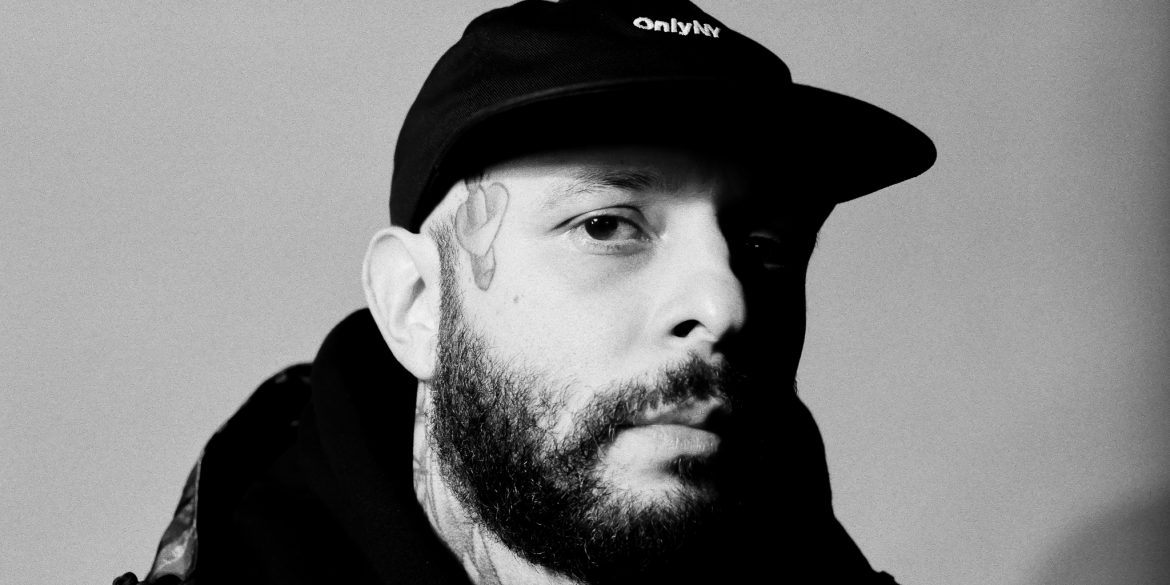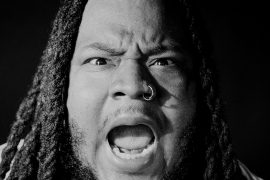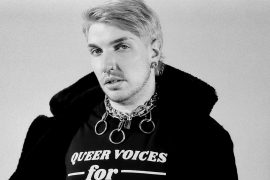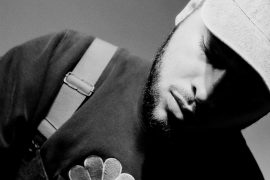Tattoos are not taboo anymore. The art form has grown in prominence and acceptance over the years and is respected as one of the last true organic art forms. Indianapolis itself has produced a number of respected tattoo shops over the years, but only one specializes in the oldest style of American Traditional: Kewpie Tattoo.
Aldo Rodriguez is a tattooer at Kewpie Tattoo where he and his fellow artists pump out some of the toughest traditional tattoos in the city. A mellow dude with over eleven years of experience, Aldo lets his tattoos do the speaking for him with strong, bold traditional designs that will be here long after he is gone. Please welcome Aldo Rodriguez to Art Identified.
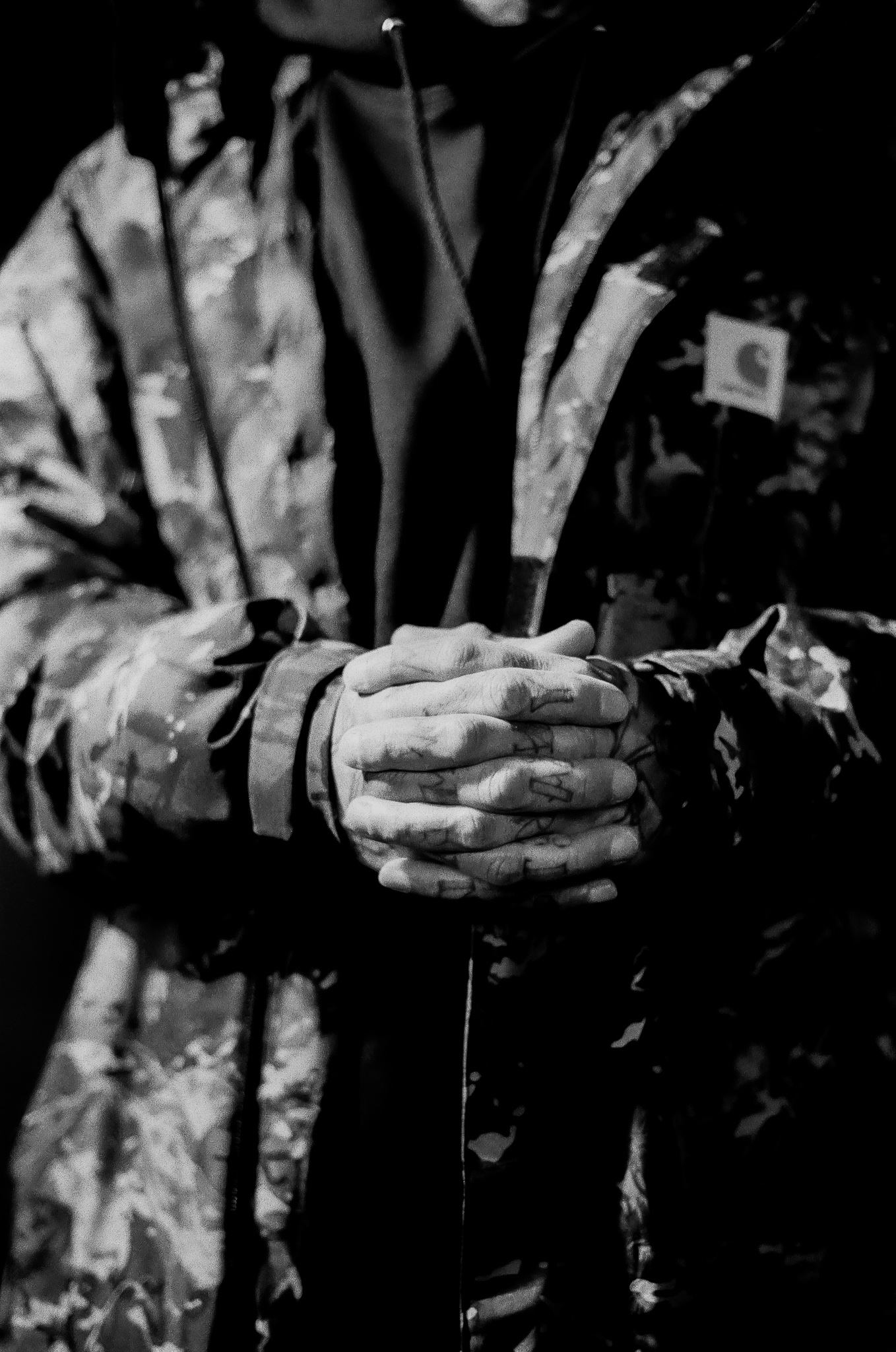
Jacob Moran: First of all thank you for being here. Let’s start with how long you’ve been tattooing?
Aldo Rodriguez: Almost eleven years. I did my apprenticeship for two years and then started my career. Some apprenticeships go even longer but two years is sort of the minimum time length needed to experience all of the ins and outs of how a tattoo shop works. A lot of time spent in an apprenticeship is tracing designs, shadowing and just learning how to be in that environment. Then one day a walk in happens and the shop says that you’re ready and you do it.
JM: Were you nervous when it came time to do your first tattoo?
AR: Oh yeah. It was scary. I was shaking pretty bad. Definitely nerve racking doing your first one.
JM: When someone breaks into a new art form there are times where you are doing work that doesn’t exactly thrill you. You have to do some of the boring work to get to the fun work. You have been able to own and work at your shop Kewpie Tattoo that does exclusively traditional tattoos. Was this always an end goal for you?
AR: I always knew going into it that I wanted to be a traditional artist. I already knew what it was before i started tattooing because I played in hardcore bands where that is predominantly the style of choice when it comes to tattoos. So I knew before I even started my apprenticeship that that was the style I wanted to do. But like most new tattooers I still did whatever came through the doors. Like little stars and other basic designs. But my first actual tattoo was a little sailor jerry design. Mainly because the people i was apprenticing under knew that was what I wanted to tattoo so i started with that. But it could be months before I get to do another traditional tattoo.
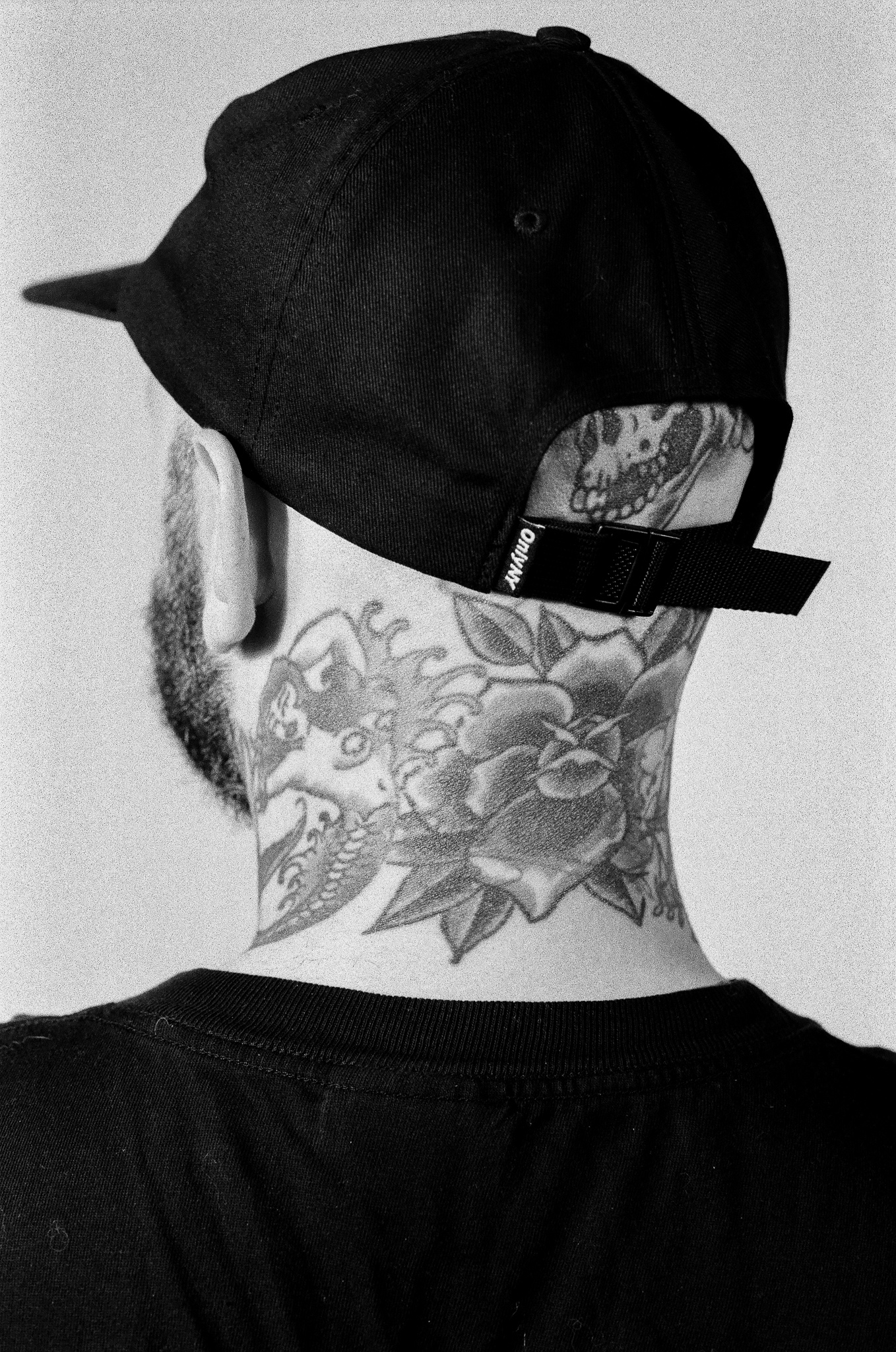
JM: Was it hard to stay motivated doing those designs when you knew that you really wanted to be doing traditional designs?
AR: I mean first in foremost I love tattooing in general. I wouldn’t want my career to be anything other than tattooing. So even if I could only do designs like ‘infinity symbols’ and ‘arrows’ I would gladly do them because I truly love tattooing. But yeah, it got a little tedious at times. I think in my first six or seven years of tattooing I did mostly non-traditional designs because that is what people wanted. I was lucky enough to do traditional designs on my friends here and there just for the practice. But realistically it didn’t really matter because even tattooing those designs still beats doing anything else. I don’t really know how to do anything else. It’s the best job.
JM: There are a lot of people who don’t know exactly what a traditional tattoo is but can easily recognize the style. What makes a traditional tattoo?
AR: It is something that is recognizable. You can identify it from across the room. For instance a rose or an animal head. You can look at it and know exactly what it is. Even just looking at your tattoos now I can see you have a sparrow, eagle and a wizard. They’re just easy to identify. With more artistic styles it takes some more time to identify what it is. Not that there’s anything wrong with that, I personally just like to tattoo the things that are straight to the point.
JM: From my experience, traditional tattooers sometimes get a bad wrap for being stuck up or ‘purists’. But there is a sound reason for why traditional tattooing has stood the test of time and is held in such high regard. Can you expand upon that?
AR: I’m not sure that is the case. I think people look at traditional tattooing like it’s easy to do because the designs are simple and straightforward. Maybe some people think you are a lesser tattooer, because you aren’t doing super realism work or crazy coloring. But a lot of people that do other styles or think they are jack of all trades artists bomb when doing a traditional tattoo. The lines are shaky, the colors aren’t saturated and the tattoo overall is not well done. It is a lot harder than you think. It takes a lot of practice to make it look simple.
JM: Traditional tattooing has really stood the test of time. Trends in tattooing come and go pretty frequently. Traditional designs that were made eighty years ago are still being made today. What is it about Traditional tattooing keeps it relevant?
AR: People are attracted to the history of it. You have people who remember their grandparents having these designs. They hold up and stand the test of time. It goes back to the ease of recognition with these designs. If your grandfather has an eagle on his chest and even if it looks faded you can still tell what it was because they are made that way with bold outlines, a lot of black and a lot of shading. It has just been around for so long that people can easily identify it and identify with it.
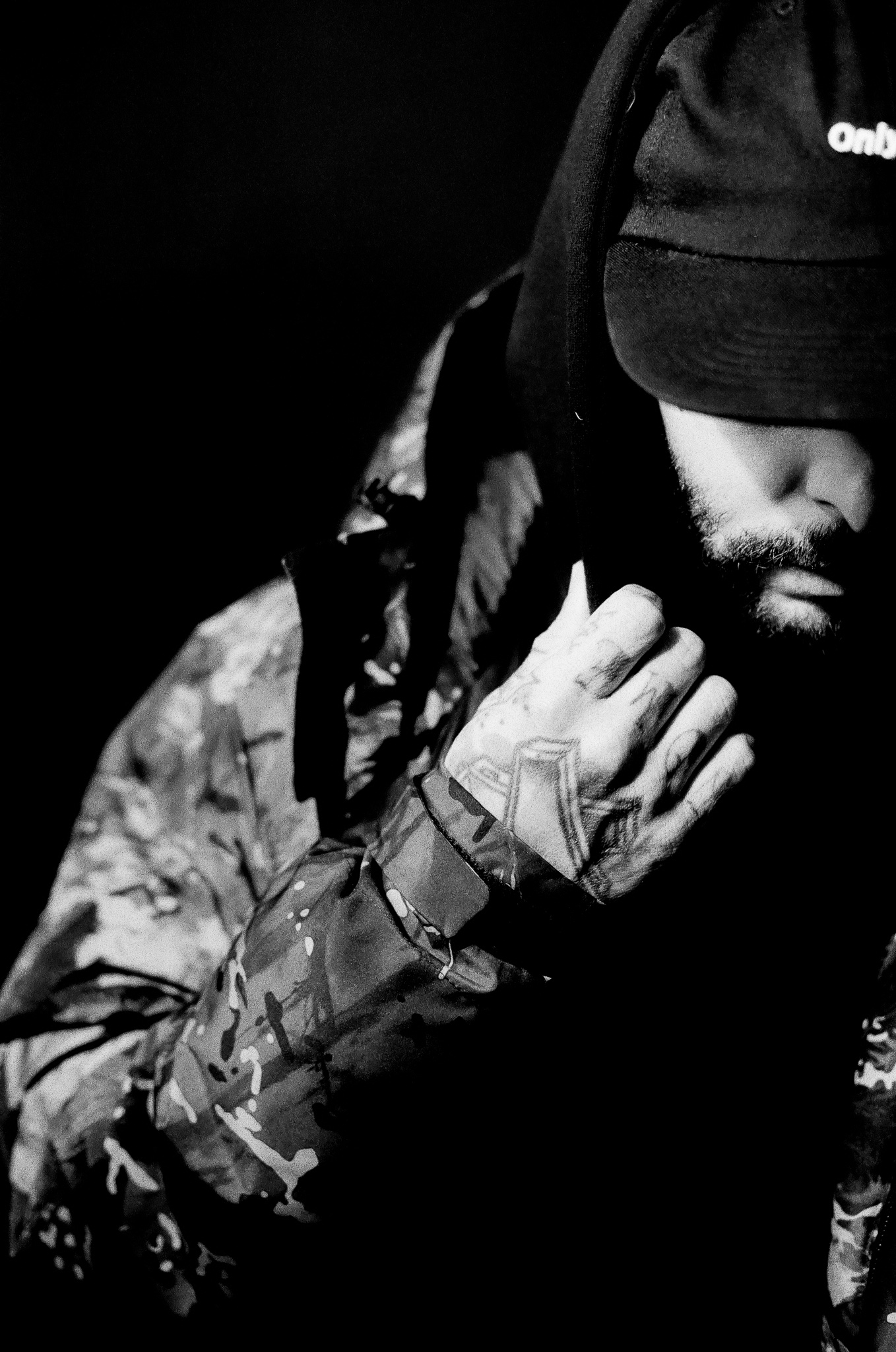
JM: You repeat designs a lot which is typical in your style of tattooing. However you make sure to make each one special with just a slight variation to make it unique and one of a kind to the client. Whether that be the color scheme or the way it’s shaped. Is it ever hard for you to challenge yourself to do a Rose in a new or refreshing way considering you’ve done it a million times?
AR: I always try and keep it fresh. I don’t want to do the exact same design over and over. I can do a perched eagle a million times but it will always look different because they are all designed by hand. Maybe the leaves will be a different color or the eagle’s feet are in a different place. I don’t ever find it to be a challenging thought because people who go to traditional tattooers know what they’re getting into.
JM: You have an extensive background in music. I would like to hear a little bit about that. Did your music career lead you to tattooing or have you always had an interest in it?
AR: It did a hundred percent. I wouldn’t be tattooing today if i never did music. I have never had a real job so to speak. Out of high school I went directly to playing in bands and touring. Being in two bands I was touring ten months out of the year so I took it pretty serious. It wasn’t a hobby or anything, it was my job. And like I said in those bands the tattoo style was mostly traditional so I was always surrounded by those designs. I did that for about six or seven years which led me to Indianapolis and starting my apprenticeship.
JM: Going from one art form to another I am curious as to how your passion for tattooing compared to your passion for music. Did you know right away that tattooing was going to be your new career?
AR: Not initially. I actually didn’t even want to tattoo. It was quite literally handed to me. The guy who I apprenticed under really encouraged me to pursue it. He obviously saw something in me that I didn’t and admired my work ethic. But I had zero art skills or background. I could hardly draw stick figures. Until tattooing I hadn’t had a single piece of art drawn by myself. And traditional tattooing is so weird. You’re not just an artist. You’re part mechanic and dermatologist. You have to really learn these things and then the art part comes naturally from repetition. But once I started doing tattoos regularly I knew right away that this was what I was going to do for the rest of my life.
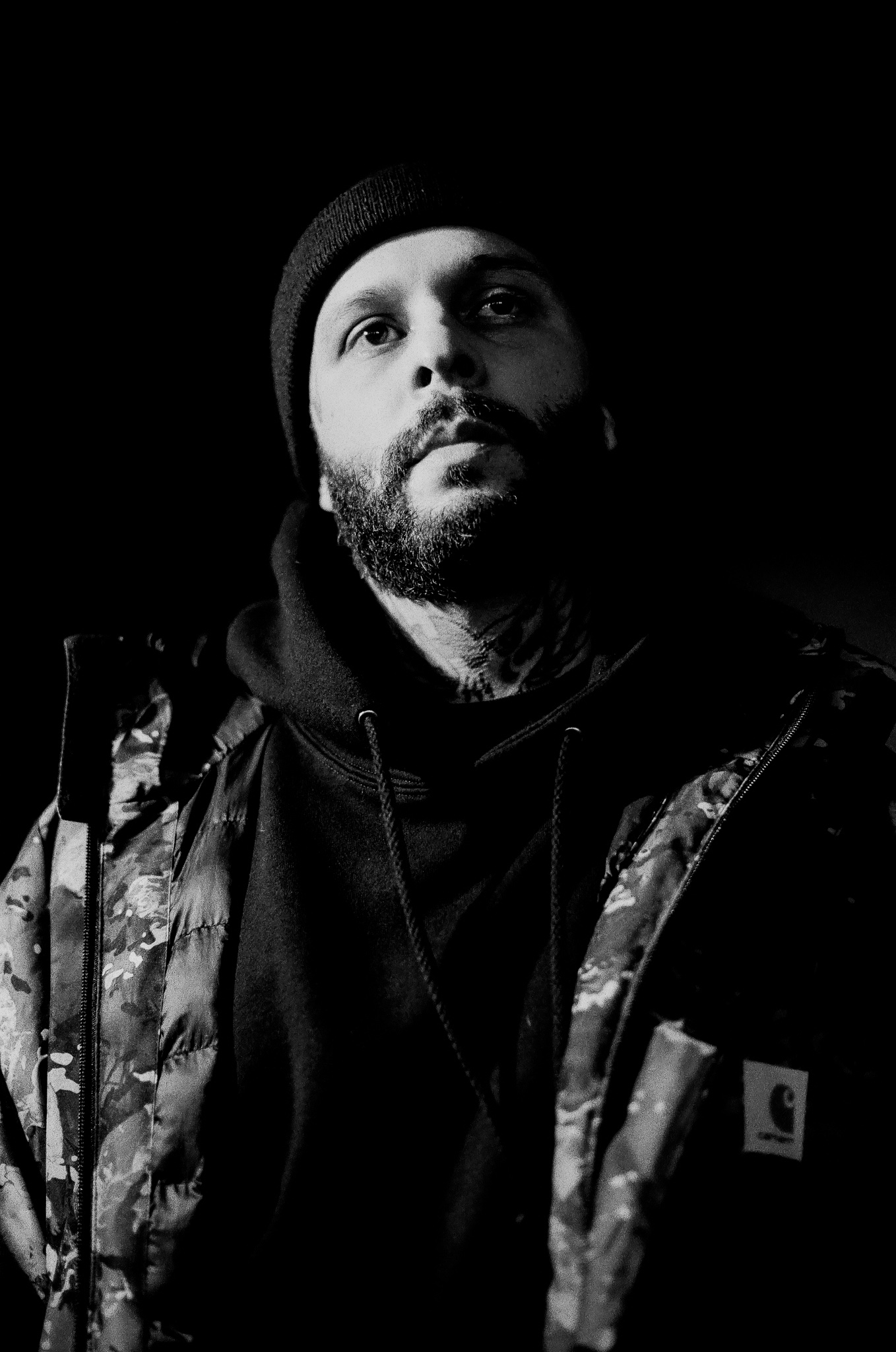
JM: I have heard you on multiple occasions talk about how much love you have for Indy. Coming from Florida, what is it about Indy that made you want to stay and build a reputation here as opposed to a larger market city?
AR: I love Indy. I was born in Puerto Rico, lived there until I was nine then moved to South Florida which is much bigger than Indy. So once I moved here life just felt easier. It’s cheaper to live here. The people are generally nicer. It’s less violent. The cold really sucks but everything else about the city is super chill. My love for the city also ties into tattooing. Indy has a lot of working class families. A good deal of my clients are working class people and that is my shit. I am so interested in factory workers, welders and mechanics. People in trades like that. I am attracted to people that work hard and are really dedicated to their trade. There is something that is really exciting about that.
JM: I want to end on a hard ball question. A client wants one of three designs; A Skull, Eagle or Rose. Which one do you do and why?
AR: Skull. They’re so tough looking and everyone has one. It is unquestionably my favorite thing to tattoo.

